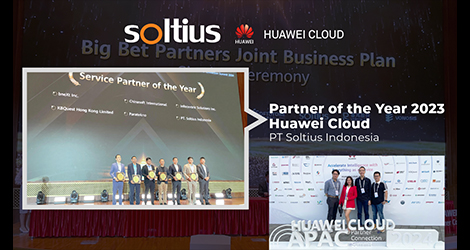Future Growth Of Midsize Businesses Hinges On The Strength Of A Modern Data Platform

IDC recently made a bold prediction: 75% of organizations will become completely digitally transformed by 2027, and the rest will go out of business. Why? Successful digital transformation allows businesses to operate with a level of agility necessary to adapt to a marketplace that is increasingly volatile, uncertain, complex, and ambiguous.
In most cases, midsize businesses seem to be on the same page with IDC. Some are applying data, analytics-driven decision support, and automation capabilities to augment employee competencies and empower them. Others are going a step further by expanding and accelerating business operations and creating meaningful customer interactions with artificial intelligence and machine learning.
Even though the acquisition of new digital capabilities is carefully planned, midsize companies are likely unaware of – and potentially unprepared for – the growing data sprawl and data-management complexity that’s happening behind the scenes.
The pressure to digitally evolve calls for a consistent view and architecture
The rising intelligence of digital technologies presents tremendous opportunities for midsize businesses to outpace the rest of their competition. But before reaching this level of leadership, they must overcome significant challenges:
- Data is often stored in the fragmented system of an on-premise landscape as well as six to eight cloud platforms, running various applications, platform as a service, data storage, or use for side-car reporting.
- Islands of data isolation are created, depriving decision-makers of valuable insights across the business, the marketplace, and their own customers.
- The outcomes of automation technologies are limited as models pull from a narrow set of data, also compromising the successful rollout of projects.
Traditionally siloed digital transformation is a considerable impediment to long-term growth. In fact, the IDC analyst connection, “How Critical Is the Digital Platform for Midsize Organizations?,” revealed that some midsize businesses exhibit a lack of integration of digital projects across the business (50%) and the inability to create a strategic road map for digital investments (41%).
Increasingly, the growth of midsize businesses depends on the strength of a unified modern data platform, which is critical for turning data into insight. IT leaders must create a trusted foundation of connected, real-time data that is carefully and faithfully governed, orchestrated, and made accessible business-wide. Furthermore, the infrastructure, tools, and services supporting this platform must be flexible and agile enough to immediately address shifting customer demand, increasing disruption, and evolving market dynamics.
It’s never too late to establish a strong foundation for data unity
Consolidating, moving, replicating, or collecting all data in a centralized data repository is not a sustainable nor cost-effective tactic – unless it is connected. Doing so allows growing businesses to capture real-time value from varied types of data that are generated from a range of cloud and on-premise systems and expressed in process automation and decision-making.
This means having a single, unified view of your entire enterprise enabling advanced line-of-business applications, analytics, data warehousing, intelligent technologies, and data management, requiring attention to three fundamental principles:
- Know all data: Understand what your data looks like, where it is, and how it’s related. Examine how referential integrity, constraints, stored procedures, and automation triggers are influenced by existing statistical models and enhance or limit business processes.
- Orchestrate all data: Process data where it is located wherever possible and avoid expensive data movement with a consolidated view of all data covering various business processes and applications. This requires improved data quality, efficient enrichment, and dynamic security measures.
- Utilize all data: Achieve a single unified view of your business by deriving value from a single data set without duplication and through the adoption of numerous analytical and processing engines and technologies.
This approach is about visibility and reducing risk. But most of all, it’s about unlocking data-driven innovations that deliver new business models and processes that capture customer attention, empowering employees, and keeping competitors guessing today and for years to come.
By following a virtuous cycle of data management, intelligent technologies, and automated business processes, midsize businesses position themselves to realize the full potential of a modern data platform, machine learning, artificial intelligence, conversational assistants, and process automation.
And it’s a safe bet that data governance, user centric insights, intelligent answers from big data, and business outcomes via automation, enabled by a unified data platform layer no matter where the data resides, will be at the heart of such transformations.
Is your digital platform ready to create the sustainable competitive advantage and differentiation you need to outcompete larger players today and tomorrow? Read the IDC analyst connection, “How Critical Is the Digital Platform for Midsize Organizations?” for more.
Other News


